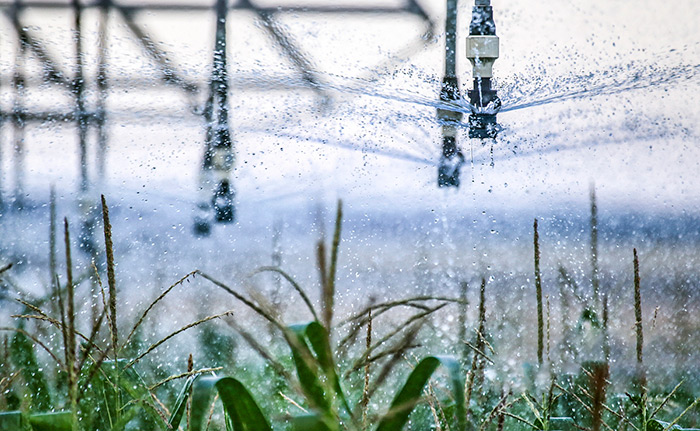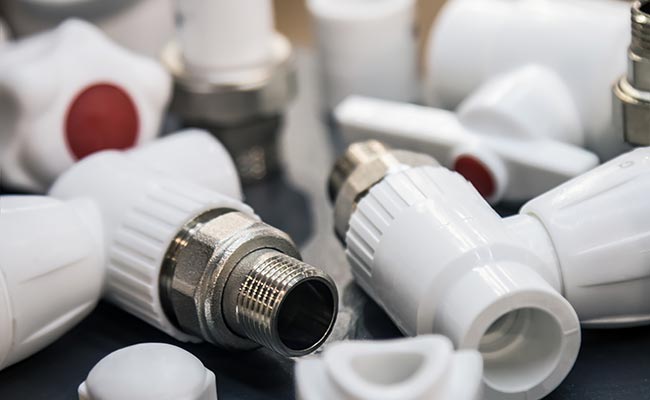
A PPR stop valve creates a strong, watertight seal at every connection. Its durable, non-toxic material resists corrosion and protects plumbing from leaks. Homeowners and businesses trust this valve for long-lasting performance. Proper installation and regular maintenance help keep water systems safe and reliable.
Key Takeaways
- PPR stop valves use strong, flexible material and precise engineering to create tight seals that prevent leaks and resist corrosion for long-lasting plumbing protection.
- Proper installation with clean pipe cuts, correct heat fusion welding, and accurate valve positioning is essential to ensure leak-proof connections and reliable system performance.
- Regular pressure testing and simple maintenance, like monthly inspections and cleaning, keep PPR stop valves working well and extend their lifespan, saving money and avoiding costly repairs.
PPR Stop Valve Design and Material Benefits
Leak-Resistant PPR Construction
A PPR stop valve stands out for its leak-resistant construction. The secret lies in the unique molecular structure of polypropylene random copolymer (PPR). This structure gives the valve both flexibility and strength, so it can handle pressure changes and temperature swings without cracking or leaking. The material’s high impact resistance and tensile strength help the valve stay intact, even when water pressure rises suddenly.
Tip: The heat fusion joining method used with PPR stop valves creates seamless, permanent bonds. These joints are often stronger than the pipe itself, which means fewer weak spots and less risk of leaks.
Here’s a quick look at the key material properties that make PPR stop valves so reliable:
| Material Property | Contribution to Leak Resistance |
|---|---|
| Molecular Structure | Flexibility and strength under stress keep the valve leak-free. |
| Thermal Resistance | Withstands temperatures up to 95°C, perfect for hot water systems. |
| Mechanical Properties | High impact resistance and flexibility prevent cracks and deformation. |
| Chemical Resistance | Inert to corrosion and scaling, so the valve stays leak-proof for years. |
| Heat Fusion Joining | Seamless, permanent bonds eliminate leak points at connections. |
These features work together to deliver a PPR stop valve that keeps plumbing systems safe and dry.
Precision Engineering for Tight Seals
Manufacturers use advanced technology to create PPR stop valves with precise dimensions and smooth surfaces. This precision ensures every valve fits perfectly with pipes and fittings. The result is a tight, secure seal that blocks even the smallest leaks.
Recent advancements in manufacturing, such as improved injection molding and computer-aided design, have made PPR stop valves even more reliable. These technologies produce defect-free valves with consistent quality. Enhanced fittings and better connection designs also make installation easier and reduce the risk of leaks.
- Advanced injection molding creates smoother, more durable valves.
- Computer-aided design ensures perfect fit and alignment.
- New fitting designs speed up installation and improve sealing.
A PPR stop valve with this level of engineering gives homeowners and businesses peace of mind. Water stays where it belongs—inside the pipes.
Corrosion and Chemical Resistance
PPR stop valves offer outstanding resistance to corrosion and chemical damage. Unlike metal valves, they do not rust or corrode, even after years of use. This resistance comes from the chemical makeup of PPR, which stands up to acids, bases, salts, and other chemicals found in water supply systems.
- PPR valves resist rust and scale buildup, keeping seals strong and leak-free.
- They maintain performance in harsh conditions, including high temperatures and chemical exposure.
- The smooth interior surface prevents scale and biofilm, so water flows freely and stays clean.
Note: PPR stop valves can handle water temperatures up to 95°C and pressures up to 16 bar, making them suitable for demanding plumbing jobs in homes, offices, and factories.
Because PPR stop valves do not degrade like metal valves, they last longer and need less maintenance. This durability means fewer leaks, lower repair costs, and safer water for everyone.
PPR Stop Valve Installation and Leak Prevention

Proper Pipe Preparation and Cutting
Proper preparation and cutting of PPR pipes set the foundation for a leak-free plumbing system. Installers who follow best practices reduce the risk of leaks at every connection. Here is a step-by-step guide to ensure the highest quality installation:
- Select the right tools and materials, such as a sharp pipe cutter, deburring tool, measuring tape, and fusion welding machine.
- Measure the PPR pipes accurately and mark the cutting points.
- Cut the pipes cleanly and smoothly using a dedicated pipe cutter designed for PPR material.
- Remove burrs and rough edges from the cut pipe ends with a deburring tool or sandpaper.
- Clean the inner surfaces of fittings to eliminate dirt or debris.
- Inspect all pipes and fittings for visible damage, such as cracks or scratches, before assembly.
- Ensure the installation site is clean, dry, and free from sharp edges.
Tip: Clean, straight cuts and smooth edges help the PPR stop valve fit securely, creating a tight seal that prevents leaks.
Common mistakes during pipe cutting can lead to leaks at valve connections. Installers sometimes use dull cutters or make jagged cuts, which cause poor sealing. Misalignment before welding also weakens the joint. To avoid these issues, always use sharp tools, make straight cuts, and check alignment before proceeding.
Secure Heat Fusion or Electrofusion Welding
Heat fusion and electrofusion welding are the most reliable methods for joining PPR pipes and fittings. These techniques create strong, seamless bonds that keep water inside the system. Installers heat both the pipe end and the fitting socket to the recommended temperature, then quickly join them and hold until cooled. This process forms a joint that is often stronger than the pipe itself.
IFAN’s data shows that heat fusion welding for PPR pipes has a failure rate below 0.3%. This high success rate means installers can trust this method to deliver leak-proof joints for every PPR stop valve connection. Quality assurance and precise temperature control further improve reliability.
The recommended settings for heat fusion welding are as follows:
| Parameter | Recommended Setting / Value |
|---|---|
| Heat Fusion Welding Temperature | Approximately 260°C |
| Pressure Classes (Operational) | PN10: 10 bar (1.0 MPa) at 20°C |
| PN12.5: 12.5 bar (1.25 MPa) at 20°C | |
| PN20: 20 bar (2.0 MPa) at 20°C |

Installers must avoid common welding mistakes. Uneven heating, incorrect timing, or moving the joint before it cools can weaken the bond and cause leaks. Using calibrated tools and following the correct procedure ensures a secure, leak-proof connection.
Note: Only trained professionals should perform fusion welding. Technical training and knowledge of PPR pipe performance are essential for safe and effective installation.
Correct Valve Positioning
Correct positioning of the PPR stop valve is crucial for leak prevention and system performance. Installers must align the valve properly with the pipe to avoid stress on the joints. Loose fittings or poor alignment can compromise the seal and lead to leaks over time.
- Always position the valve according to the system design and installation drawings.
- Ensure the valve sits straight and level with the pipe axis.
- Tighten fittings securely, but avoid over-tightening, which can damage the valve or pipe.
- Inspect each joint visually after installation to confirm proper alignment and sealing.
Improper installation, such as poor welding or loose fittings, creates weak connections. These weak spots can fail under pressure, causing water leaks and costly repairs. By following best practices and using the right tools, installers help every PPR stop valve deliver reliable leak protection for years.
PPR Stop Valve Testing and Maintenance
Pressure Testing for Leak Detection
Pressure testing helps plumbers confirm that every PPR stop valve connection is leak-free before the system goes into service. They follow a careful process to ensure accuracy:
- Isolate the system by closing all connected valves.
- Fill the pipes slowly with water using a pump. This prevents air pockets.
- Increase the pressure to 1.5 times the normal working pressure. For most systems, this means testing at 24–30 bar.
- Hold this pressure for at least 30 minutes. Watch the gauge for any drops.
- Check all joints and connections for water droplets or wet spots.
- Use leak detection tools, like acoustic detectors or infrared cameras, for hidden leaks.
- Release the pressure slowly and inspect again for any damage.
Tip: Always repair any leaks found during testing before using the system.
Visual Inspection for Seal Integrity
Regular visual checks keep the PPR stop valve working at its best. Plumbers look for leaks, cracks, or damage every month. They also check the valve handle for smooth operation. Using soapy water helps spot tiny leaks. If they find any issues, they fix them right away to prevent bigger problems.
- Monthly inspections help catch leaks early.
- Annual cleaning and disassembly keep the valve in top shape.
- Quick action on any problem extends the valve’s life.
Routine Maintenance Tips
Simple maintenance steps help the PPR stop valve last for decades:
- Inspect for wear, leaks, or discoloration.
- Clean with mild soap and warm water. Avoid harsh chemicals.
- Keep the valve within its rated temperature range.
- Fix any problems as soon as they appear.
- Use high-quality fittings for all repairs.
- Record all inspections and repairs for future reference.
Note: PPR stop valves need less maintenance than metal valves. Their strong, corrosion-resistant design means fewer worries for homeowners and businesses.
Choosing this valve means dependable leak protection and long-lasting performance. Regular testing and maintenance keep water systems safe. Environmental benefits include:
- Lower energy use during production and installation
- Long service life reduces waste
- Recyclable materials support sustainability
- Corrosion resistance protects water quality
FAQ
How long does a White Color PPR Stop Valve last?
A White Color PPR Stop Valve can last over 50 years under normal use. Its strong material and leak-proof design ensure long-term reliability.
Tip: Choose PPR valves for fewer replacements and lower maintenance costs.
Is the White Color PPR Stop Valve safe for drinking water?
Yes. The valve uses non-toxic, hygienic PPR material. It keeps water pure and safe for every household or business.
| Feature | Benefit |
|---|---|
| Non-toxic PPR | Safe for drinking use |
| Smooth surface | No bacteria buildup |
Can the valve handle hot water systems?
Absolutely. The valve works safely at temperatures up to 95°C. It fits perfectly in both hot and cold water pipelines.
- Great for kitchens, bathrooms, and heating systems
- Maintains performance even with high temperatures
Post time: Jul-21-2025





